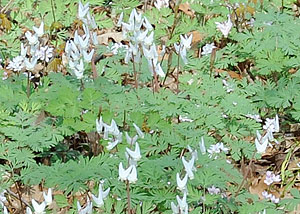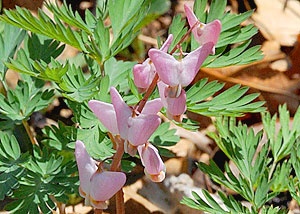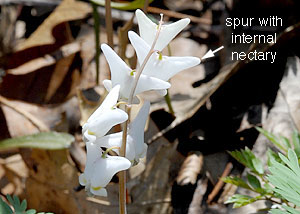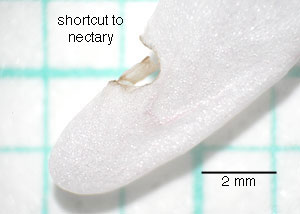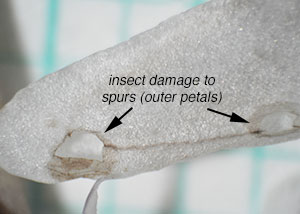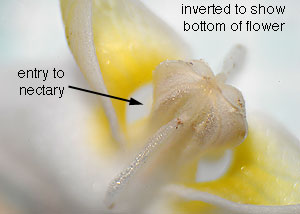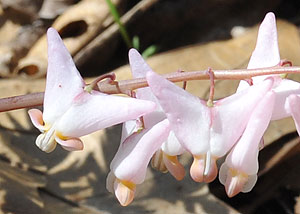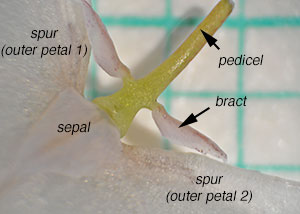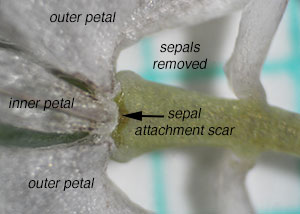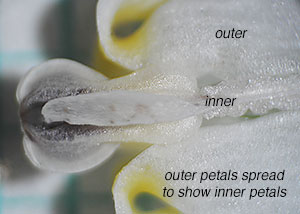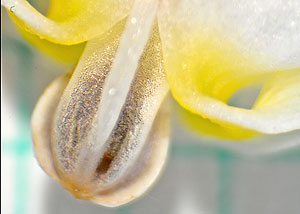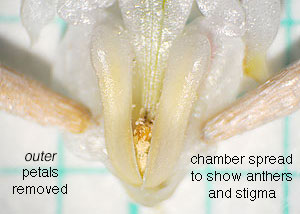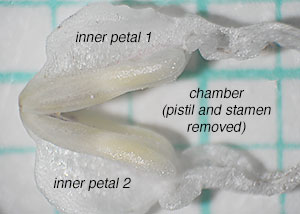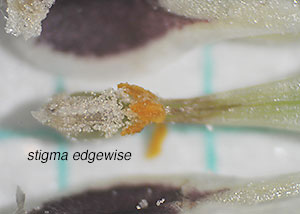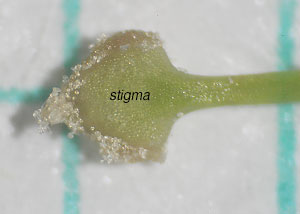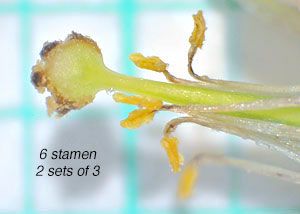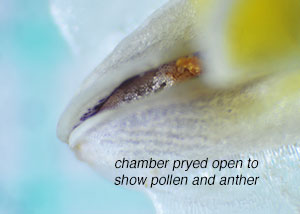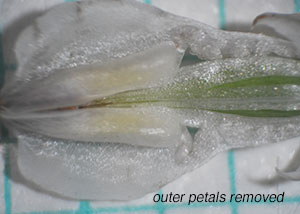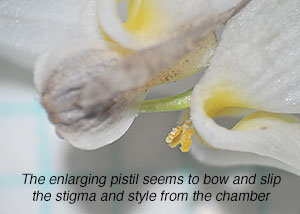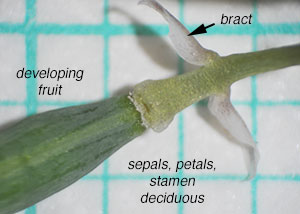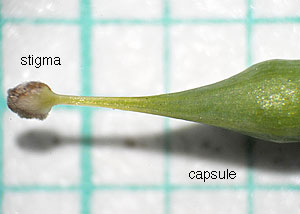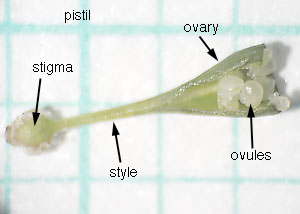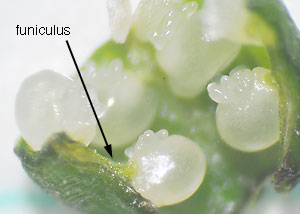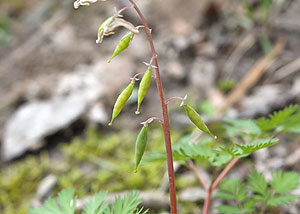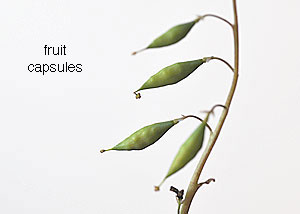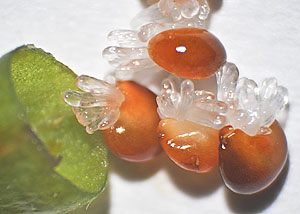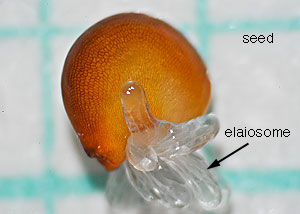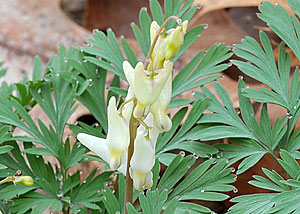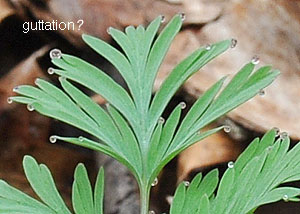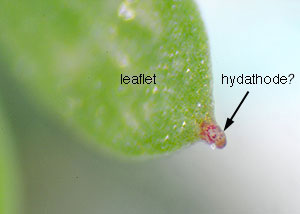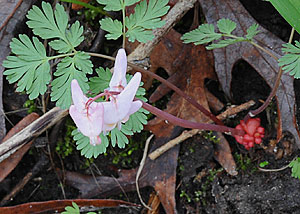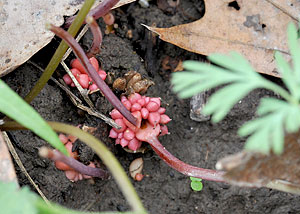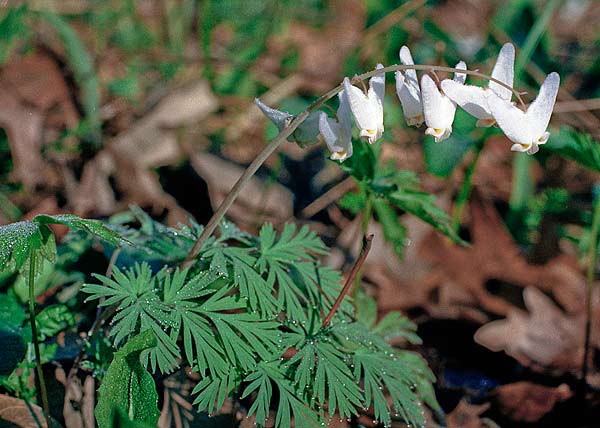

| Classification Hierarchy | |
| Kingdom | Plantae |
| Subkingdom | Tracheophyta |
| Superdivision | Spermatophyta |
| Division | Magnoliophyta |
| Class | Magnoliopsida |
| Subclass | Magnoliidae |
| Order | Papaverales |
| Family | Fumariaceae/Papaveraceae |
| Genus | Dicentra |
| Species | Dicentra cucullaria |

Scientific Name: Dicentra cucullaria. At the moment the taxonomic position of Dicentra is controversial. Some experts place it in Furariaceae, others in Papaveraceae.
Common Name: Dutchman's-Breeches
Origin: Native
Notes: The USDA shows seven species of Dicentra of which two occur in Iowa - Dicentra cucullaria (Dutchman's breeches) and Dicentra canadensis (Squirrel corn). The flower spurs in "cucullaria" are more deeply divided resembling the trouser legs of a dutchman's breeches. The spurs on "canadensis" are less deeply divided giving a heart shaped (cordate) appearance. Both grow in rich woods and bloom in early spring. Both species develop bulbils just below the soil surface - pink in the case of "cucullaria" and yellow (like corn) in the case of "canadensis". Bulbils enable asexual reproduction. D. cucullaria is toxic to grazing animals—the toxic principle is Isoquinoline alkaloids.
Dutchman's breeches have a mutualistic relationship with ants called myrmecochory. Ants distribute the seeds by taking them to their nests. The ants feed on a fleshy part of the seeds (the elaiosome) and the seeds germinate and sprout from the nests. The chamber mentioned below, consists of two modified inner petals which serve to keep anthers and stigma in close proximity; however, the plants are believed to be self incompatible and pollination is provided by bees. Some bees chew (or enter existing) holes in the spurs to reach the nectories—without pollinating the flowers. See: J.B. Free and S.E. McGregor 1, 2. Note: guttation and condensation may look very similar in photos, hence the question marks after the labels in the photos.
Additional references: 1, 2, 3, 4, 5, 6, 7, 8, 9, 10, 11, 12, 13, 14, 15, 16, 17.
